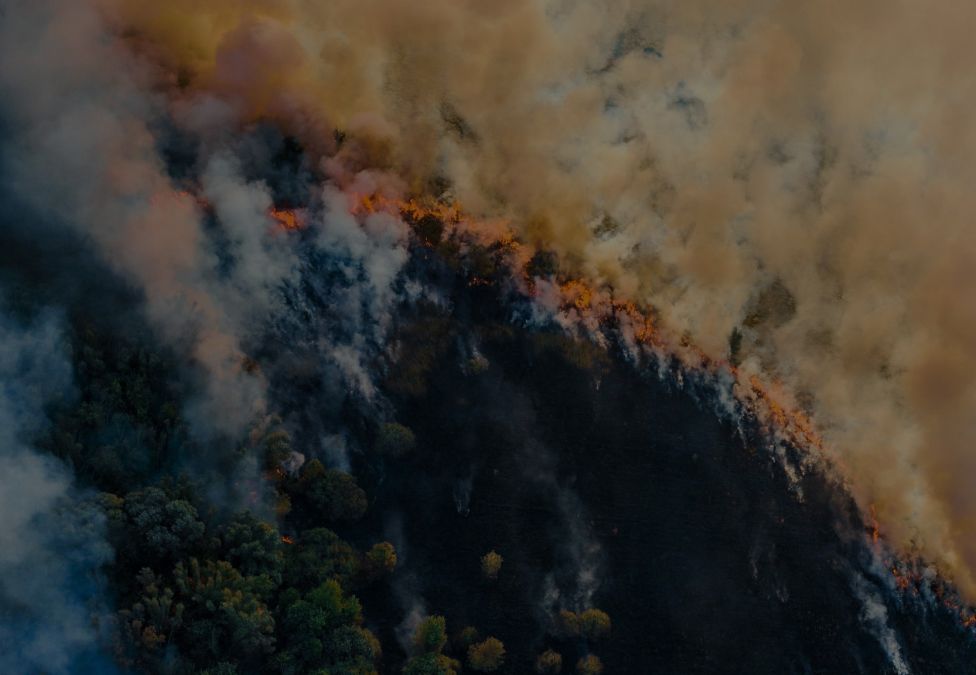
The recent bouts of severe heatwaves and wildfires across the US and Europe were a stark reminder of the very tangible impact of rising temperatures on our living environment. But the reality is that extreme weather events are not new phenomena.
Data from the World Meteorological Organization showed that the period between 2015 and 2021 saw the seven hottest years in history. The threat of such events extends beyond simple inconveniences. Over 2,000 deaths were recorded during the recent heatwaves in Europe, while wildfires devastated local communities.
A study by insurance firm Munich RE found that 2021 recorded one of the highest levels of financial losses associated with natural disasters. Last year’s summer flash floods in Europe were the continent’s costliest natural disasters to date.
As the climate crisis takes an increasing toll on the world, there is a growing need to address physical risks. Investors will need to analyze and account for them as they assess the impact of climate change in their portfolio.
An Investor’s Approach to Tackling Physical Risks
Investors should integrate physical risk assessments at three levels of their investment management practices.
First, at the top-down asset allocation level, it is critical that we study the impact of physical risks on key economic indicators such as growth and inflation, which could then inform models of expected returns. Given that methodologies are still being developed, and due to uncertainties around how physical risks might evolve over time and across different regions, working with a range of models can help to better assess the impact of physical risks in different climate scenarios.
Second, at the asset class portfolio level, investors should consider working with portfolio screening tools to map out the locations of assets in the portfolio, and how they would be affected by chronic and acute physical risks. The Asia Investor Group on Climate Change’s compendium of physical risk assessment tools offers a valuable resource on the range of tools investors might want to use. This analysis would focus on the direct impact on the operations of the asset, which includes physical damage, higher energy and water usage, and costs resulting from supply chain disruptions. It would help investors identify assets most exposed to climate-related physical risks for deeper due diligence.
Incorporating physical risk exposures into analyses will be critical in enabling investors to create more resilient portfolios and helping the wider community develop robust climate adaptation strategies.
Third, forward-looking physical risk assessments should be incorporated in the due diligence process at the individual asset level. For example, at GIC, our real estate team decided not to proceed with a potential investment due to the asset’s proximity to unstable cliffs and receding shorelines, which would have made it vulnerable to rising sea levels and storm surges.
Investors could also conduct regular reviews of existing assets and may implement preemptive measures to mitigate their assets’ exposure to physical risks. For instance, to protect assets from potential flood risks, asset owners may want to proactively raise the minimum flood slabs or put in place flood protection gates.
Limited Physical Risk Disclosures
Investors have started to account for climate change-related risks in their portfolios, but few have taken into account physical risks.
The Task Force on Climate-related Financial Disclosures 2021 Status Report found that the use of metrics such as weather-related losses for assets was far outweighed by emissions-related metrics. Quantitative disclosures of forward-looking physical risks were also less common compared to transition risks.
Part of the reason is the need to improve the models that assess the impact of climate change on investment portfolios. For instance, the ability of economies to adapt to climate change is not fully captured in the physical damage functions used to estimate chronic physical risk impact. Another challenge is the lack of granular, asset-level data. Company disclosures for physical risk vulnerabilities are limited, and basic information required for physical risk assessments such as the geocodes of assets are rarely disclosed.
Investors should work with researchers and service providers to develop methodologies to model physical risks and improve the overall integration of physical risk assessments into the investment process. The research collaboration between Wellington Management Company and Woodwell Climate Research Center that began in 2018 is one such good initiative that is focused on physical risks, with the initiative recently expanding to involve several asset owners including GIC.
As the frequency and gravity of weather extremes rise globally, measures to adapt to climate change are becoming as important as the need to reduce carbon emission. Incorporating physical risk exposures into analyses will be critical in enabling investors to create more resilient portfolios and helping the wider community develop robust climate adaptation strategies.
















